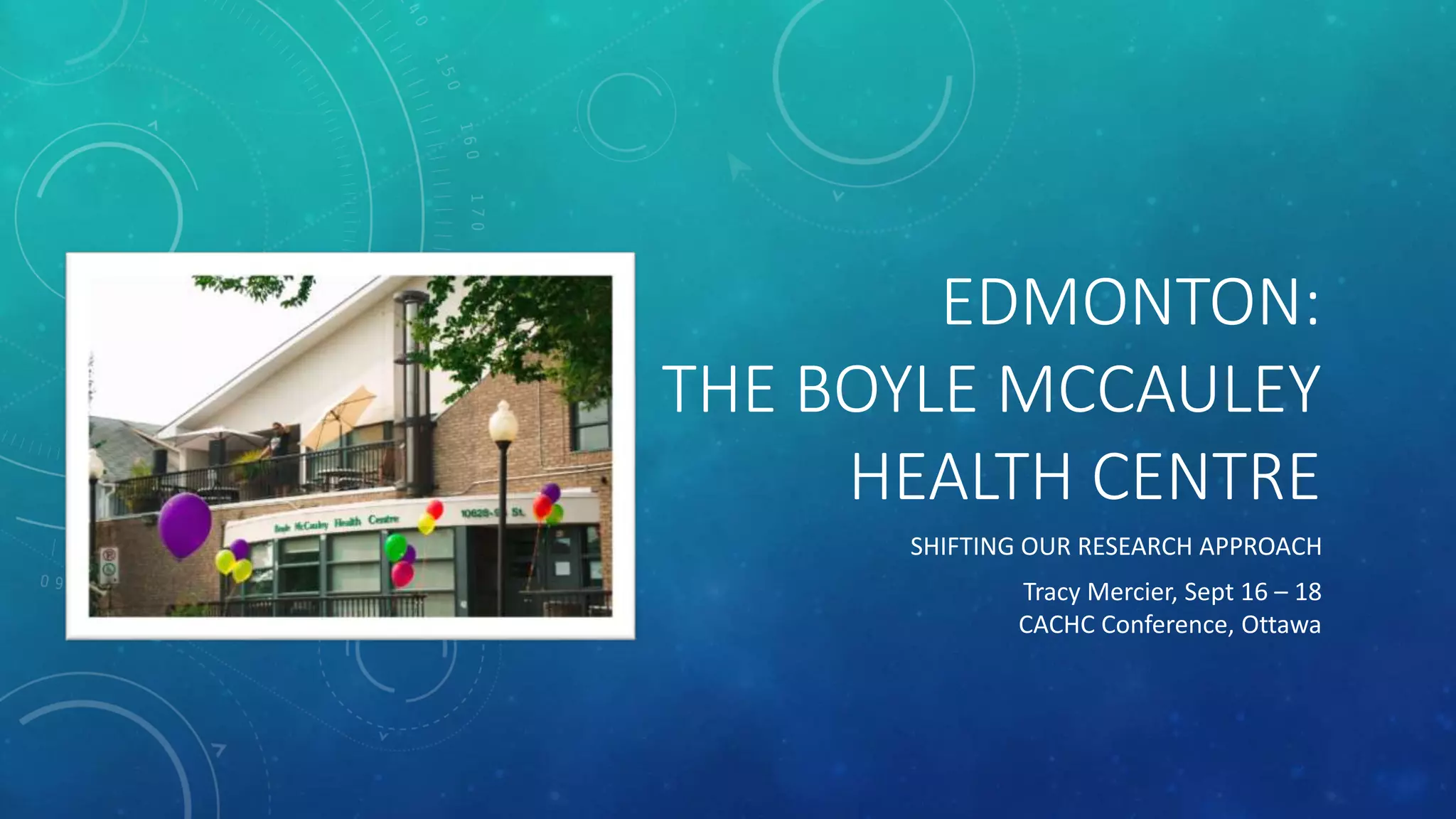1) The Boyle McCauley Health Centre in Edmonton started with a small research position coordinating a longitudinal study and has expanded to conducting various research and evaluation projects to gather data for strategic planning, program implementation, and funding applications.
2) One project involved redesigning evaluation protocols for the Pathways to Housing Edmonton program, which included input from clients.
3) An analysis of electronic medical record data from the health centre identified the top 20 problems clients seek help with, such as finding employment, housing supports, and dealing with medication management.










